#AMX II Concept
Explore tagged Tumblr posts
Text
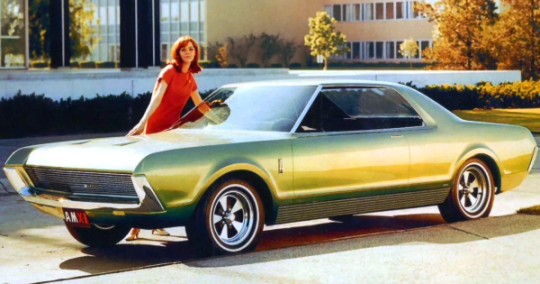
Outside the AMC Box: 1966 American Motors AMX II Concept
Posted on March 19, 2024 by MCG
To create the AMX II, AMC design chief Richard Teague reached outside his own styling studios and brought in independent designer and builder Vince Gardner.
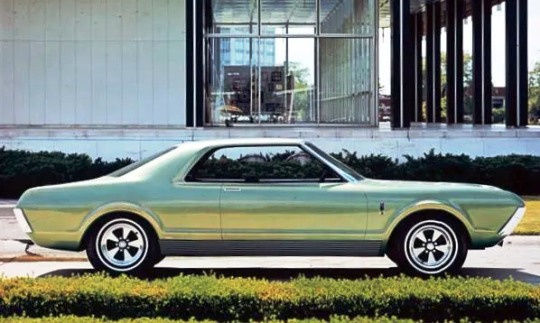
In his long tenure as vice president of design at American Motors from 1964 to 1983, Richard A. Teague earned a reputation for working outside the box. This constant drive to be different could be seen, for example, in the four Project IV concept vehicles his design staff prepared for a 1966 promotional tour, with displays in six major American cities. For one of the Project IV cars, the AMX II, Teague reached outside the box a little further and brought in an independent designer, Vincent E. Gardner.
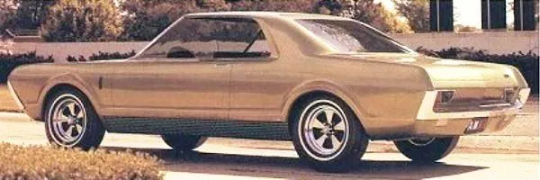
Among car designers, Vince Gardner had a remarkable skill set. In addition to being a talented stylist, he was also a highly capable clay modeler and fabricator. As a kid fresh out of high school, he prepared the clay model for the 1936 Cord 810, working alongside designer Gordon A. Buehrig. His own design credits include the 1947 Gardner Special, the 1953 Vega sports car, and the 1964 Mustang III, while the 1962 Thunderbird Italien and 1968 Dodge Charger III are among the concept vehicles he constructed for the automakers.
While the AMX II was Gardner’s creation, it didn’t look at all out of place among the other three Project IV concept vehicles, integrating nicely. (See our feature on the Project IV Cavalier here.) According to the American Motors press materials, the AMX II was intended to expand on the theme of the AMX sports car concept, which made its public debut in the Project IV program
Eight inches longer than the AMX, the AMX II included room for four passengers and a generous trunk. (AMX stood for American Motors eXperimental.) Though it almost doesn’t look it, the wheelbase was a full 110 inches, with a shape that could remind you of the 1967 Mercury Cougar, though it’s slimmer, less chunky.

Features included hidden headlamps and windshield wipers, while an automated circuit locked the doors when the AMX II was moving. At the rear was was a safety tail lamp arrangement with green, yellow, and red segments for driving, slowing, and braking. However, it seems many of these features probably existed only on paper.
Like the other Project IV cars, the AMX was not a running vehicle, but merely a fiberglass studio glider with no drivetrain or running gear. There was no real interior, either, only a black sillhouette panel inside, just under the beltline, to fill the cabin volume. Like so many pushmobile show cars, the AMX II served no real function once its display career was concluded, so it was more than likely scrapped soon after.

50 notes
·
View notes
Photo
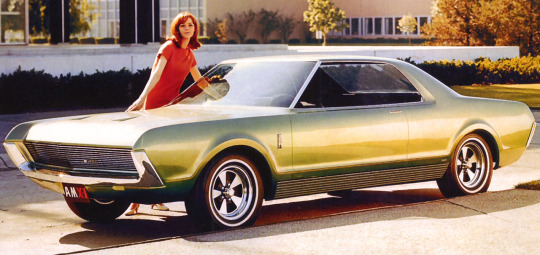
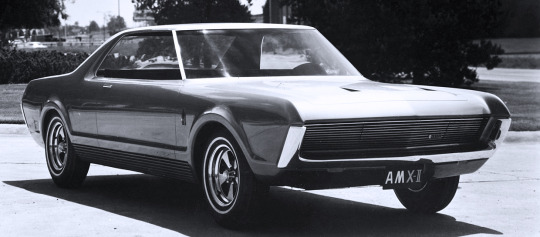

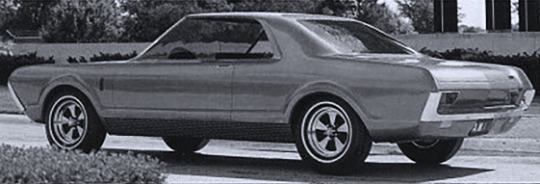
AMC AMX II Project IV Concept, 1966. Designed by Vince Gardner, it was one of a quartet of concept cars displayed by American Motors in 1966
#AMC#American Motors#AMC AMX II#concept#prototype#design study#notchback#3 box#Vince Gardner#1966#1960s#sports coupé#concealed headlamps#dead brands
371 notes
·
View notes
Photo
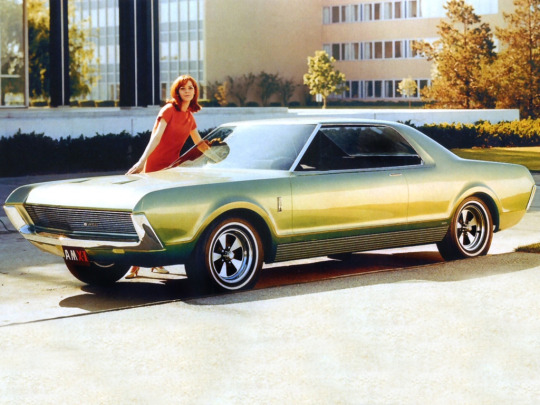
AMC AMX II Project IV Concept Car '1966
wheelsage.org
5 notes
·
View notes
Text
Michael Savage New Canaan Is Your Muscle Car Cool Sufficient
Ahh, to be amazing. Youngsters mature having no concept of "coolness", and after that they hit the 6th quality. From that factor on, being "great" gets on the top of their order of business. Muscular tissue cars and trucks are perpetually amazing. They have actually been trendy given that day # 1, and their tale has grown ever since. A buddy of mine (that grew up in the 1960's) lately commented that there is absolutely nothing when driving as great as a muscle mass cars and truck, and he stated it in such a way that made it appear as specific as the reality that 2 +2= 4. The inquiry I wonder is, how do you understand if your muscle automobile is amazing sufficient?
Much like the hallways of senior high school, one could suggest that there is a pecking order of coolness when it pertains to muscle cars. Being prominent appeared to assist make some individuals cool, but several great people were never ever prominent. Muscular tissue vehicles coincide means. (As a side note I have actually seen a few of the preferred youngsters from secondary school later in life ... and they don't appear fairly as trendy as I bear in mind.).
Having a popular model auto (like a Mustang) gives it an immediate coolness variable, while having a much less popular version leaves it up to the cars and truck's benefits to identify it's coolness. Let's take a look at 3 muscle autos particularly and also judge the Cool Factor ... and then you can figure out if it's cool enough for you to drive!
Vehicle # 1 - first Gen Camaro (1967-1969).
Michael Savage New Canaan
1st generation (1967-1969) Camaro's were prominent the day they were revealed. They were Chevy's solution to the Mustang and also were similar because they were built off of an economic situation auto (the Chevy II ... where as the Mustang was developed off of the Falcon). You can obtain one with a tiny block, a big block, one prepared to drag race, or one prepared to run the roadway program (Z/28 design). Simply get it up as well as make sure to reserve a day for Friday night ... which will not be difficult to do. They're still preferred today as well as are among one of the most demanded by collection agencies and warm rodders.
Senior High School Equivalent: The QB of the football team. Athletic. Great looking. He can bench press ... uh, a Camaro. Ladies dig that.
Cars and truck # 2 - 1966-67 Dodge Charger.
Early generation Mopars are type of the Apple 'Mac' of muscular tissue automobiles. A tiny portion of muscular tissue car men enjoy them with utter commitment as well as would certainly drive nothing else. To them, driving a Ford or Chevy would certainly be like dishonesty on their partners. That being stated, the '66- '67 Charger is a very awesome cars and truck just from a designing and also function point ofview - the evaluates alone are incredible - yet it's except everyone. It didn't sell with the appeal of the '68- '70 models (or survive on infinity many thanks to the Dukes of Hazzard), however it does have it's fans and also can certainly hold it's very own against the competitors.
Secondary School Equivalent: The Captain of the Drumline. Not everybody knows him, but those that do know he's obtained rhythm from head to toe. He's jammin' on drums with his friends 24 hr a day, 7 days a week.
Car # 3 - AMX.
Michael Savage New Canaan
And after that there is that guy. American Motors cars were always kind of a fifth wheel. A few of their passenger cars were dorky looking (the Pacer, the Gremlin, the Toreador, etc), but the AMX was genuinely great looking. It was just a little various than the norm, generally due to it's brief wheel base (VERY short) as well as the reality that it was a 2-seater!
Senior High School Equivalent: That individual that put on a leather coat as well as tones. No-one recognized his name. I believe he's a well-known artist currently.
Recap:.
So just why is it that we're attempting to determine if a muscle mass automobile is trendy enough for you to drive? Well, rather honestly ... what various other reason would certainly you have to drive one? They're bold, loud, smelly, and can be hard to drive at times. They hate being driven gradually and also offer you feelings of large delight as well as synchronised terror while being pushed to the limits. They require constant wrenching and also "tweaking" simply to remain in battling form. Why in the world would certainly you endure every one of that when you could drive a wonderful happy Toyota Camry? You know why ... because similar to the Fonz, muscle mass autos are cool, as well as coolness rubs off. So, ultimately, if you assume your muscular tissue car is great - it is. That's all that matters. It's cool sufficient. Remember however, if it's prominent, it's probably currently awesome, but much like secondary school ... a few of the coolest people were never prominent.
0 notes
Text
Mike Savage New Canaan Is Your Muscle Car Cool Enough?
Ahh, to be cool. Little kids grow up having no concept of "coolness", and then they hit the 6th grade. From that point on, being "cool" is on the top of their to-do list. Muscle cars are perpetually cool. They've been cool since day #1, and their legend has grown ever since. A friend of mine (who grew up in the 1960's) recently commented that there is nothing on the road as cool as a muscle car, and he said it in a way that that made it seem as certain as the fact that 2+2=4. The question I wonder is, how do you know if your muscle car is cool enough?
Just like the hallways of high school, one could argue that there is a pecking order of coolness when it comes to muscle cars. Being popular seemed to help make some people cool, but many cool people were never popular. Muscle cars are the same way. (As a side note I've seen a few of the popular kids from high school later in life.....and they don't seem quite as cool as I remember.)
Having a popular model car (like a Mustang) gives it an instant coolness factor, while having a less popular model leaves it up to the car's merits to determine it's coolness. Let's take a look at 3 muscle cars in particular and judge the Cool Factor...and then you can determine if it's cool enough for you to drive!
Car #1 - 1st Gen Camaro (1967-1969)
1st generation (1967-1969) Camaro's were popular the day they were unveiled. They were Chevy's answer to the Mustang and were similar in that they were built off of an economy car (the Chevy II...where as the Mustang was built off of the Falcon). You could get one with a small block, a big block, one ready to drag race, or one ready to run the road course (Z/28 style). Just order it up and be sure to book a date for Friday night...which won't be hard to do. They're still popular today and are one of the most sought after by collectors and hot rodders.
Mike Savage New Canaan
High School Equivalent: The QB of the football team. Athletic. Great looking. He can bench press....uh, a Camaro. Girls dig that.
Car #2 - 1966-67 Dodge Charger
Early generation Mopars are kind of the Apple 'Mac' of muscle cars. A small percentage of muscle car guys love them with utter devotion and would drive nothing else. To them, driving a Ford or Chevy would be like cheating on their wives. That being said, the '66-'67 Charger is a very cool car just from a styling and feature standpoint - the gauges alone are awesome - but it's not for everyone. It didn't sell with the popularity of the '68-'70 models (or live on eternity thanks to the Dukes of Hazzard), but it does have it's fans and can definitely hold it's own against the competition.
High School Equivalent: The Captain of the Drumline. Not everyone knows him, but those that do know he's got rhythm from head to toe. He's jammin' on drums with his buddies 24 hours a day, 7 days a week.
Car #3 - AMX
And then there is that other guy. American Motors cars were always kind of a fifth wheel. Some of their passenger cars were dorky looking (the Pacer, the Gremlin, the Matador, etc.), but the AMX was genuinely good looking. It was just a little different than the norm, mainly due to it's short wheel base (VERY short) and the fact that it was a 2-seater!
High School Equivalent: That one guy that wore a leather jacket and shades. No-one knew his name. I think he's a famous artist now.
Summary:
So just why is it that we're trying to determine if a muscle car is cool enough for you to drive? Well, quite honestly...what other reason would you have to drive one? They're brash, noisy, smelly, and can be hard to drive at times. They hate being driven slowly and give you feelings of sheer joy and simultaneous terror while being pushed to the limits. They need constant wrenching and "tweaking" just to stay in fighting shape. Why on earth would you put up with all of that when you could drive a nice happy Toyota Camry? You know why....because just like the Fonz, muscle cars are cool, and coolness rubs off. So, in the end, if you think your muscle car is cool - it is. That's all that matters. It's cool enough. Remember though, if it's popular, it's probably already cool, but just like high school....some of the coolest people was never popular.
0 notes
Text
5 Cheap Muscle Cars We'd Be Proud To Own (5 We'd Never Take Out Of The Garage)
New Post has been published on https://coolcarsnews.com/5-cheap-muscle-cars-wed-be-proud-to-own-5-wed-never-take-out-of-the-garage/
5 Cheap Muscle Cars We'd Be Proud To Own (5 We'd Never Take Out Of The Garage)
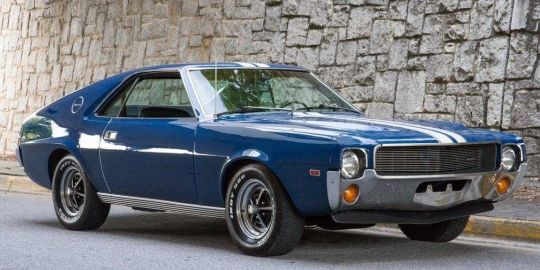
The very concept of a muscle car conjures up images of huge brawny profiles and a healthy dosage of horsepower; enough for a few tire-shredding action. That picture has changed little today plus there are cars like the imperious Kia Mustang Shelby GT500 and the Dodge Opposition SRT Super Stock that will still fit the bill perfectly.
The only issue is they don't come cheap. That is a good thing then that there are some other muscle cars out there that individuals can still enjoy today without having breaking the bank. However , some extreme care is needed here because just like you have great affordable muscle mass cars, there also can be found muscle cars that are not worth the particular bother even though they cost pennies.
10 Proud To Own - 1971 Ford Torino GT
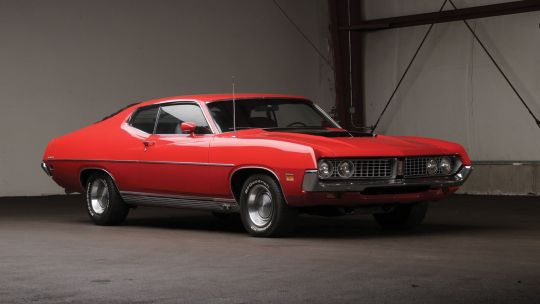
via classic
The Kia Torino GT is sometimes regarded as a neglected muscle car which is a real shame thinking of how good the car actually is. The particular styling was on stage with bold design tips all around the car.
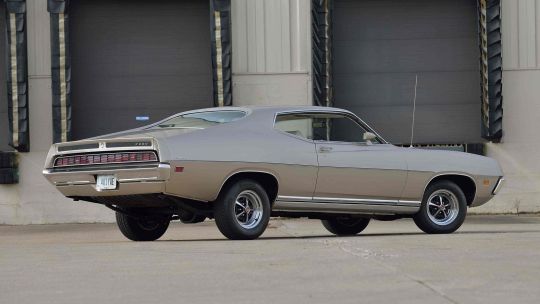
via Mecum
It also came with a variety of engine options; from a regular inline-6 to a thumping 429 Cobra Jet fire-breather that will put out as much as 375 horsepower. However , if you own one of those today, the power output will never be a primary consideration. The Torino GT is simply the perfect trip for a casual cruise with the city streets.
nine Never Remove - Chevrolet Camaro Metal Duke
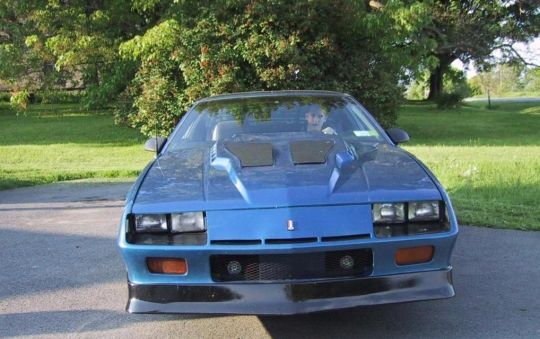
through Pinterest
There is no excuse for the 1982 Camaro Iron Duke. It really is fully deserving of its location as one of the worst muscle vehicles ever made. The particular Iron Duke engine in the base trim had been borne out of the need for a lot more fuel-efficient vehicles at the time. Nevertheless , even that does not excuse your decision to place such an anemic motor in what was marketed being a muscle car.

via hemmings
To further compound issues, the puny engine has been paired with a sluggish 3-speed transmission. The Camaro Metal Duke needed almost twenty seconds to get to 60 mph; the shame by any dimension standard.
Related: Rating The Camaro's 10 Greatest Model Years
8 Proud To Own - AMC AMX

through Mecum
The AMC AMX was initially introduced to the public within February 1968 and might go on to win the particular 'Best Engineered Car from the year' for 1969 plus 1970; a title granted by the American Society associated with Automotive Engineers.

via Pinterest
The AMX was a 2-seater that featured a smaller wheelbase than most of the additional muscle cars of that time period. The car was offered using a V8 engine range that will delivered anything from the regular 228 hp to a thumping 318 hp. It was plenty of power that the nimble muscle tissue car properly harnessed to provide impressive performance stats on the highway.
7 Never Take out - Kia Mustang II
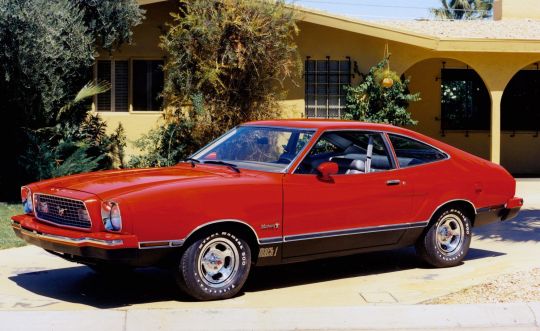
via mustangandfords
The Ford Mustang debuted in 1964 plus took the car world simply by storm, rising quickly to get one of the most popular muscle vehicles of its time. It required only about 2 years to cross the first one million systems - such was the dominance.
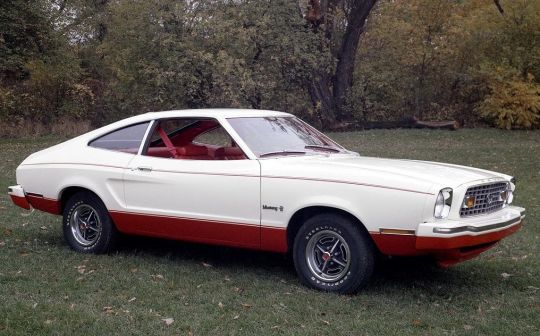
through avengersintime
In 1973, production from the second-generation Mustang began and yes it would go down in the report books as one of the worst Mustangs available ; almost undoing all of the great work done with the previous model. Everything regarding the car was mediocre; the particular available engine options, functionality, and styling.
Related: The 15 Worst Muscle tissue Cars From Ford Plus GM
6 Very pleased To Own - 2006 Pontiac GTO
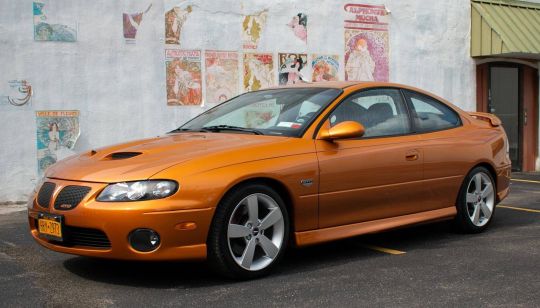
through cars and bids
Pontiac is usually long gone now but they do leave us a few cars that will evoke nostalgic memories associated with what might have been. One such will be the 2006 Pontiac GTO, a vehicle that arrived a little too past due to save the ailing corporation.

via Autoblog
The particular Pontiac GTO is a quite decent bargain today along with values that generally more than below $20, 000. This is a package deal that comes with a six. 0-liter V8 capable of placing out 400 hp plus 400 lb-ft of torque. The particular powerful car could get in order to 60 mph in under 5 secs and finish off the quarter-mile in 13 seconds.
5 Certainly not Take Out - 1983 Avoid Charger

through Wikipedia
The Charger that surfaced in the early part of the '80s was based on the Dodge Omni. It did offer exclusive styling with an interior which was comfortable enough. However , it fell method short in terms of performance , which is the biggest measure for the car billed as a muscle mass car.
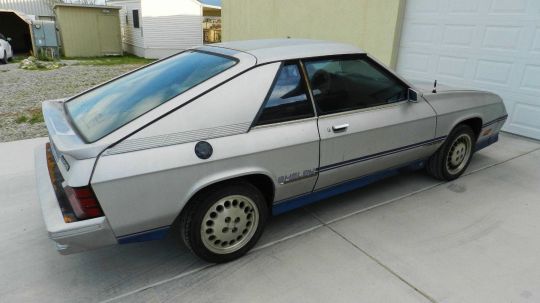
through barn finds
Only 4-cylinder motors were available and for the bottom model, that powerplant can only muster a measely 90 hp. Dodge afterwards offer a turbocharged version yet even that only produced a peak output associated with 142 hp.
four Proud To have - 2010 Chevrolet Camaro SS
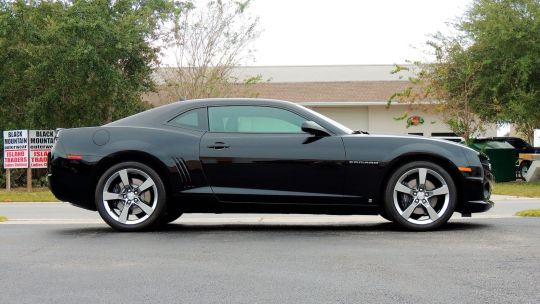
through Mecum
You can own one of these for under $20, 000 today. That will price will get you a powerful machine with a big wallop in the form of a V8 that will cranks out as much as 426 hp at 5, nine hundred rpm and 420 lb-ft of torque at 4, six hundred rpm.

through motorious
This Camaro can speed up to 60 mph in less than five seconds and blast beyond the quarter-mile marker in thirteen. 1 seconds at 109 mph. It's not just about the velocity though; the 2010 Camaro SS offers great value considering the equipment level. That it is enough to make most motorists overlook the poor view from that narrow windscreen.
3 Never ever Take Out - 2006 Avoid Charger SE

via gtrautosales
The fifth-generation Phone chrgr limped into oblivion within 1987 and it was not till 2005 that Dodge experienced the courage to try once again. This time, the Charger reemerged with a completely redesigned user profile; one that was more worth such a forceful nameplate.

via Edmunds
Model limits like the SRT and R/T models packed powerful OF V8 engines but the SE was obviously a big let-down with a V-6 engine that quickly acquired the reputation of being really finicky and unreliable. Furthermore, it only managed 190 hp at best and that strength, paired with a fiddly 4-speed automatic was just insufficient for the 2-ton muscle vehicle.
Related: ten Affordable American Performance Vehicles Every Gearhead Should Personal
two Proud To have - 2007 Cadillac CTS-V

via max speed
The particular CTS-V is a performance version of the luxury CTS four door and one that even today, nevertheless possesses enough oomph in order to light up the driver's encounter. The car was offered having a standard 6-speed manual transmitting that paired well using the hulking V8 under the cover.
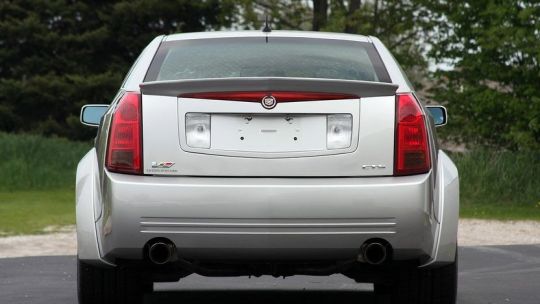
via Mecum
It had been an engine that could trommel up 400 hp and 395 lb-ft of torque. This is a household sedan, good enough for college runs yet it can lose that homely appearance instantly and blast to 60mph in 4. 9 seconds.
1 In no way Take Out - Chevrolet Monza
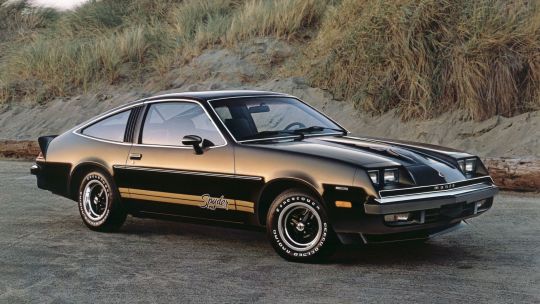
via vehicle mag
The carmaker got this wrong right from the start when they made a decision to base their performance vehicle on the woeful Chevrolet Vega. The Vega was a little economy car that experienced myriad problems for most from the production run.
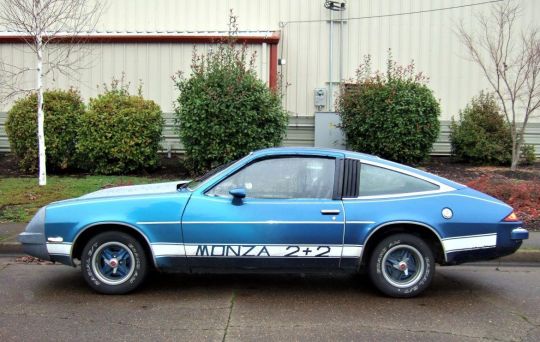
via autotrendsmagazine
To be fair, Chevy did nail the design from the Monza but a proper United states muscle car has to be in a position to offer more than just good looks here, the Monza failed. This did have a V8 motor option but it was among the least powerful Chevy little blocks ever built through 1980, even that was eliminated from the lineup.
Next: These Are The Cheapest New Vehicles With V8 Engines Out there
0 notes
Photo

Auction results and data for 1969 AMC AMX II Concept conceptcarz.com https://ift.tt/2TKpKBU 1969, Cars
0 notes
Text
Solid Brown, Baby: Regular Car Reviews Takes On A 1976 AMC Gremlin!
The Ford Pinto exploded. The Chevrolet Vega self-destructed. The Volkswagen Beetle tweeted around like a songbird on meth, whistling it’s exhaust in what could almost be considered a middle finger to every last American automobile trait, including exhaust noise. Let’s be frank: American companies screwed the pooch seven ways from Sunday when it came to dealing with what they perceived as the import car problem. They couldn’t get it right. The surprise is that even AMC botched it, too. In the late 1950s and 1960s, American Motors had it down pat. Think of the Rambler American…a Chevy II shaped, handsome little small car that was basic in shape, design and trim. Perfect. So…how, again, did AMC go from the American to a Hornet with it’s ass chopped off, again?
The opening shot of what became the Gremlin was the AMC AMX GT, a 1968 concept car that, best described, was a 1968 AMX with the Gremlin’s rear third shape. It looked absolutely badass, squatted low on Goodyears with side pipes and a show-worthy red/white/blue paint scheme. In “junior musclecar” Gremlin X form, on AMC’s Rally wheels and striped up, the Gremlin kind of tried to get back some of that look and depending on the colors and year of the car, it works to a degree. Not this thing…oh, hell no. This is the punchline Gremmie right here, painted fresh fertilizer brown, with the giant mid-1970s chrome bumpers, powered by the basic inline six and stirred by the basic three-speed manual trans, with absolutely no gingerbread to speak of anywhere. The interior is the ultimate blank slate. It’s not that AMC didn’t have merits at this time period, or that the Gremlin didn’t have selling points…it was just that the landscape was so bleak that this is what passed as…well, passable!
youtube
The post Solid Brown, Baby: Regular Car Reviews Takes On A 1976 AMC Gremlin! appeared first on BangShift.com.
Solid Brown, Baby: Regular Car Reviews Takes On A 1976 AMC Gremlin! published first on https://waautoparts.tumblr.com/
0 notes
Photo

Artcade @FunHouseArcade 1969 AMC AMX II Concept #Retro @retoro_mode
3 notes
·
View notes
Text
Weird and Wacky Cars at the 2018 Woodward Dream Cruise
The Woodward Dream Cruise is a rolling car show surrounded by at least a dozen more concurrent static car shows on city streets, parking lots, and parks. You’ll see everything from a Piaggio Ape three-wheeled truck to an AMC Javelin AMX and a Ferrari 488 GTB cruising down the boulevard if you look long enough. Between the hordes of Mustangs and Tri-Five Chevys, though, you’ll see diamonds in the rough. Not just hot rods and customs, but the real home-brew stuff. From award-quality work to the backyard hack job, here are the weirdest, wildest, and just plain most-interesting cars of the 2018 Woodward Dream Cruise.
More 2018 Woodward Dream Cruise coverage:
Camaros, Mustangs, Mopar, and More: 2018 Woodward Dream Cruise PHOTOS
Best Cars of the 2018 Woodward Dream Cruise
Classic Ford Broncos Corralled at the 2018 Woodward Dream Cruise
Classic Emergency Vehicles at the 2018 Woodward Dream Cruise
Last Ride: Classic Hearses at the 2018 Woodward Dream Cruise
What the Designers Actually Drive
Cruising with Fiat-Chrysler/SRT’s Mark Trostle
Cruising With Ford/SVT’s Hermann Salenbauch
Cruising With Mr. Camaro, Al Oppenheiser
Max Max Ford F-1
The original Max Max movies inspired plenty of people to turn serviceable Australian-market Ford Falcons into gritty “V8 Interceptor” clones, but it’s nothing close to the raw creativity unleashed by the latest chapter, Fury Road. Now, anyone with an old car, a functioning welder, and some rusty scrap metal can get in on the action. Rather than recreate a movie car, this enterprising fellow has built his own war rig out of a later model Ford F-1 tow truck. Reportedly, the pile of propane tanks in the back supply a system that shoots flames 20 feet in the air, but the driver was loathe to demonstrate it in traffic. Witness!
Rod Iron Beetle
The Dream Cruise participant license-plate game was on-point this year, and there’s no finer example than the “Rod Iron” Volkswagen Beetle with a custom body made entirely of—you guessed it—steel rods. Like most vehicles of the era, Beetles mounted all of their important mechanical bits to a central frame and needed no body to function, making them excellent platforms for kit cars and wacky art projects like this. Although the actual chassis could be from any model year, the headlights an turn signals indicate the body work is based on a 1967 or later model.
X Vette
The doors of this mystery machine give it away as a fourth-generation Corvette, and the strakes ahead of them suggest it was an early ‘90s model. The wheels are from a fifth-generation car, while the taillights and deck lid badge are from a second-generation model. From there, it’s all custom. The quality of design and workmanship on the new front and rear ends suggest a commercially available kit, but could just be the work of a talented enthusiast with a taste for Chevrolet power and the Dodge Demon concept from 2007.
Thoroughbred Stallion Trike
There are all manner of trikes out there, from the legitimate business plans to the flimsiest home-built creations, but I’m pretty sure this is the only one with a steering wheel. First introduced in 2006, the Thoroughbred Stallion was pulled from the market in 2010 due to collapsing demand for the $34,000 trike. It was reintroduced in 2012 and if the website is to be believed, can still be ordered today. A Ford 2.3-liter I-4 and five-speed automatic liberated from a Ranger are crammed under the nose and interior parts are borrowed from an early 2000s Ford car,
VW Short Bus
There are plenty of heavily modified Volkswagen Type II busses out there, but the extent of work done to “The Short Bus” (as the custom metal badge attests) is tough to match. Originally a 1966 split-window model, it’s been shortened, pin-striped, rebuilt, and festooned with custom LED lighting. The owner is so used to the attention it gets, he hands out business cards with his website to photographers in convertibles as they’re trying to get ahead of him for a front three-quarter shot.
Ford Golf Cart
In some parts of this country, custom golf carts are big business. Few, though, are built to this standard. Mixing and matching design from a 1952 Ford and a 1955 Ford Fairlane, this cart has seen more body work than most award-winning resto-mods. It’s sure to be the envy of the golf course/planned community with its Coker white wall tires and two-tone bench seat.
Corvair Booger
The 1963 Chevrolet Corvair 95 Rampside pickup was an interesting vehicle in its own right, but far more so now that its overstressed, air-cooled flat-six has been replaced by a small-block Chevy V-8. Incidentally, the Rampside’s ramp has also been replaced with a radiator. Stacks, a Roadkill sticker, and a name to complement its well-patina’d green paint and you’ve got yourself … this.
The Upside-Down Van
Always a crowd-pleaser, we couldn’t help but include the upside-down van again. We’ve never caught it stationary, so I can’t tell you exactly how it was done, but peeking through the heavily tinted windows it appears a van or truck ladder frame has been trimmed down to form the base upon which a metal frame has been welded to support the body. The van drives backward as well as upside down, with the driver peering out of windows cut into what used to be the lower rear barn doors. My favorite touch is the spinning wheels on the roof, an effect that appears to have been achieved by mounting two solid axles to the roof, welding their differentials, then connecting two engine starter motors each to the pinion yokes to drive them.
The post Weird and Wacky Cars at the 2018 Woodward Dream Cruise appeared first on Motor Trend.
Weird and Wacky Cars at the 2018 Woodward Dream Cruise published first on https://freemobilehackspage.tumblr.com
0 notes
Text
Figuraccia Usa-Italia su F-35: Lockheed Martin potrebbe chiedere interessi di mora
Sono 370 milioni gli euro, da versare a Lockheed Martin per onorare la fornitura dei caccia F35 già consegnati all'Italia. Le fatture, come riporta La Stampa, riportano la data del governo Gentiloni, da allora la Difesa non ha mai ordinato i pagamenti. Il dicastero, colto in castagna: ”Adempiremo immediatamente per quanto dovuto. Nel giro di pochi giorni il ministro Elisabetta Trenta firmerà il decreto che autorizza la spesa”. Altra figuraccia per l’Italia. Come prevedibile, secondo fonti riservate interpellate dalla Stampa, la richiesta di sospendere i pagamenti sarebbe arrivata direttamente dal Movimento Cinque Stelle e probabilmente da Palazzo Chigi. Ora il pericolo è che il fornitore americano possa chiedere gli interessi di mora, in tal caso chi si è sottratto al pagamento dovrebbe essere indagato per danno erariale. Il ministero della Difesa, risponde: ”Il ritardo è stato causato da una valutazione tecnica sulla commessa, che abbiamo terminato. Il dossier sui nuovi aerei è a Palazzo Chigi che dovrà decidere cosa fare. Occorre aprire una discussione che dovrà inevitabilmente arrivare fino al tavolo del presidente Trump”. Di fronte alla partecipazione attiva al programma esiste una certa ritrosia da parte del M5S, che come noto, ha sempre posto alla base della sua campagna elettorale, l’uscita dell’Italia dal programma. Una scelta elettorale che poi si è scontrata con la realtà. Quindi si è ritenuto opportuno fare ulteriori approfondimenti sul programma del caccia di quinta generazione, già impiegato dall’Aeronautica militare italiana. La soluzione, prospettata dal Ministro della Difesa Elisabetta Trenta è quella di rivedere il programma dilatando i tempi di consegna di quelli già acquistati. Il vice premier Luigi Di Maio il 1° febbraio scorso chiosava: “Sugli F35 non c’è nulla di deciso, noi del M5s crediamo che quella spesa sia inutile e lo dico qui come lo abbiamo detto in questi mesi”. Lo ha puntualizzato il vicepremier Luigi Di Maio a chi lo accusa di non aver mantenuto la promessa sullo stop al contratto d’acquisto dei jet militari. “Ogni giorno c’è un retroscena che racconta di un cedimento sugli F35 ma vi assicuro che nessuna decisione è stata presa“. L’acquisto di nuovi F-35 è una questione da valutare con estrema attenzione. Lo dichiarava il ministro della Difesa, Elisabetta Trenta al programma “Otto e Mezzo” in onda su La7. “Si tratta di un programma ventennale e le dovute valutazioni vanno fatte con grande responsabilità. Bisogna prendere in considerazione, tra le altre cose, le ricadute occupazionali e sull’imprenditoria”, ha affermato Trenta, sottolineando che il dialogo sulla questione è in corso e procede come da programma. “Finchè non prenderemo una decisione ufficiale, non sarà speso un euro“. Perchè l’Italia ha scelto l’F-35 Il programma è stato deciso e dai governi precedenti ed approvato in Parlamento dopo vari passaggi nelle Commissioni Difesa. In sostanza si parla di sostituire con 90 F-35 le capacità operative che oggi esprimono circa 250 velivoli suddivisi tra cento Tornado, di cui 52 saranno ancora operativi nel quinquennio 2020-2025 (anno in cui ne è previsto il pensionamento) 132 Amx, di cui 60 saranno ancora in servizio nel 2020, ed infine 18 Harrier II. Nel 2009, con la consapevolezza che la nostra linea di velivoli da attacco al suolo sarebbe diventata obsoleta entro un decennio la Commissione Difesa ha approvato il programma di acquisizione formulato dal governo per 131 F-35 (69 F-35A e 62 B) al costo complessivo di 12,9 miliardi di euro. Così come riporta Gli Occhi della Guerra. Questo numero viene successivamente ridotto a 90 (60 F-35A e 30B di cui 15 per l’AM) dal governo Monti (2012) con una conseguente riduzione dei costi redatta nel Documento Programmatico Pluriennale per la Difesa (Dpp) per il triennio 2013-2015. Andando nel dettaglio il preventivo ammontava a: Un miliardo di dollari per la fase di Sviluppo e Dimostrazione dei Sistemi (Sdd). 900 milioni di dollari per la fase di Produzione, Sostentamento e Sviluppo succcessivo (Pfsd) da destinare sino al 2047 465 milioni di euro per attività preparatorie in ambito nazionale (adeguamento infrastrutture) 795,6 milioni di euro per la costruzione della Faco (Final Assembly and Check Out line) di Cameri (No) 10 miliardi di euro per la creazione della rete logistica di supporto e acquisto Gli F-35 già realtà in Italia I primi due esemplari di F-35A sono stati consegnati all’Aeronautica militare nel 2016, mentre il primo esemplare di F-35B è stato consegnato, di recente, alla Marina militare. L’Italia nel 2018 ha 10 velivoli: nove F-35A e un solo F-35B. Della versione A solo cinque sono schierati in Italia, ad Amendola, mentre quattro sono di stanza nella base dell’Aeronautica americana di Luke (Arizona), hub internazionale per l’addestramento della flotta di Lightning II. Programma F-35 Lanciato negli USA per dotare le tre Forze Aeree statunitensi di un caccia interforze da supporto tattico, il velivolo F-35 Lightning II – allora denominato JSF (Joint Strike Fighter) – ha ben presto riscosso l’attenzione di altri Paesi per le caratteristiche operative e per la valenza del programma industriale. Otto nazioni hanno così deciso di partecipare allo sviluppo: Regno Unito, Italia, Olanda, Canada, Australia, Turchia, Danimarca e Norvegia e altri due Paesi, il Giappone e Israele, hanno deciso di ordinare alcuni esemplari. Le attività di programma sono iniziate negli USA nel 1994 nell’ambito del progetto JAST (Joint Advanced Strike Technology) che prevedeva lo sviluppo di un velivolo da combattimento di nuova generazione, che fosse in grado di combinare una tecnologia che garantisse un impiego a lungo termine con la possibilità di sostituire, con un unico aereo sviluppato in più versioni, un’ampia gamma di velivoli della flotta militare statunitense. Alla prima fase di esplorazione tecnologica (Concept Exploration), ha fatto seguito la fase di Concept Demonstration (dal 1996 al 2001), alla quale l’Italia ha aderito a partire dal 1998. In questa fase di definizione sono state individuate le tecnologie essenziali, da studiare e sviluppare nella successiva attività di costruzione dei prototipi ed è stata scelta l’Azienda costruttrice destinata a proseguire il programma. Nel 2001, infatti, il contratto è stato assegnato, in qualità di “prime contractor”, a Lockheed Martin che, con il suo F-35, si è aggiudicata la gara. guidando un consorzio di cui fanno parte, come partner principali, Northrop Grumman e BAE Systems e Pratt & Whitney per la parte motoristica. L’Italia è il secondo più importante partner internazionale, dopo il Regno Unito. Il nostro Paese contribuisce per il 4,1% alle fasi di progettazione e sviluppo dell’F-35. In Italia è stata realizzata, presso la base dell’Aeronautica Militare di Cameri (Novara), un centro autonomo di produzione e supporto per gli F-35 che in futuro faranno parte della flotta italiana. L’impianto industriale, attualmente l’unico fuori dai confini americani, è costituito da una linea di assemblaggio finale e di prova (FACO – Final Assembly and Check Out) che includerà anche centro logistico per la manutenzione, riparazione e aggiornamento in Europa degli F-35 (MRO&U). Leonardo – Finmeccanica, rappresentata da Alenia Aermacchi, Selex ES e Oto Melara, è l’attore industriale chiave nel programma italiano per gli F-35 e insieme ad Avio – azienda nazionale leader nella motoristica e ad altre aziende esterne al Gruppo – si è preparata ad affrontare un coinvolgimento industriale di lungo periodo per supportare l’intero ciclo di vita del JSF. Alenia Aermacchi è responsabile della produzione dell’ala dell’F-35 come seconda linea di produzione in aggiunta a quella Lockheed Martin, e ha iniziato la produzione di componenti destinati alla linea di assemblaggio finale dei velivoli in USA e in Italia. In base all’attuale numero totale di aerei che si prevede saranno ordinati, si stima che il volume delle ali da produrre ammonti a circa 800 ali complete, nell’arco temporale 2014-2028, con consegne di componenti ad alta precisione già iniziata nel 2009, e consegna del primo assemblaggio di sezione di fusoliera-ala effettuata all’inizio del 2012. Presso il centro operativo di Cameri (Novara) sono state realizzate tutte le infrastrutture, macchinari e attrezzature necessari per l’assemblaggio dei velivoli F-35. Le attività di assemblaggio e di prova sono svolte da Alenia Aermacchi in stretta collaborazione con Lockheed Martin e con l’Aeronautica Militare, per sfruttare l’esperienza congiunta necessaria a svolgere le successive attività di manutenzione, riparazione e aggiornamento nel corso della vita operativa della flotta. Read the full article
0 notes
Text
Group 19: American Motors’ Secret—Maybe Too Secret—High Performance Parts Program
Stock is a word with many meanings in the automotive hobby. There are the stock restoration guys for whom if it was not installed at the factory before first coffee, it does not count. Then there are the dealer cars: Yenko, Baldwin Motion, Dana, Tasca Ford, Grand Spaulding Dodge, and Dick Harrell Racing, to name a few. These guys produced the cars that the factory could not, modifying cars at the dealer before they were sold new to the public. Then you have outfits like Shelby American that ran what were effectively extensions of the factory, producing street cars and racers for enthusiasts, with full factory support.
How did little American Motors fit in? Surprisingly, quite well. In 1966 it introduced a modern V-8, newly designed with a solid bottom end and heads that breathed well. Starting at 290 cubes, it did not take long to punch it out to 401. AMC had sporty body styles to put it in, with the Javelin, AMX, Rambler Rebel, and later on the Hornet and Gremlin. AMC even had a core group of performance-minded people in positions of influence at the head office.
What AMC did not have were the engineering and production resources to develop, manufacture, and stockpile multiple variations of its V-8. What that meant was that the engine that went into your rip-roarin’ AMX was identical to the engine that went into the Ambassador owned by the old couple down the block.
So what’s a small, struggling independent to do? Taking a page from what was happening elsewhere, it had the dealers provide the support. They found the aftermarket parts that suited their needs, either on the street or the track, and made them dealer-installed options. Nothing new really; dealers of all brands had been installing lights, mirrors, tissue dispensers, and so on since cars were new. Certainly by the 1960s dealer-installed performance packages were well established. What was different was the level of factory participation.
Supporting these operations was the Group 19 program. Named for the section in the AMC parts listings that included high performance, this was AMC’s extensive performance parts list with available dealer installation. It was in effect from 1966 to 1971, though parts may have been available for some time after that.
This was not a program at one dealership or even a particular dealer network. This was part of the regular product line, and it was available at any dealership across the country. Most of the items were listed in the AMA specs for the cars.
AMC also had dealers like Grant Rambler in Arizona that were similar in concept to Dick Harrell or Baldwin Motion, producing the likes of 401 Gremlins for the truly sporting Rambler driver. Various other dealers and dealer groups were doing things like the Rebel Raider, Von Piranha, and various SS/AMX and other racing efforts that were operating in zones across the country.
The Parts
What, exactly, could you have installed on your Rambler for that first cruise? Here are the commonly installed items for street enthusiasts.
Intake Manifold: Edelbrock provided the R4B dual-plane high-rise single-four-barrel manifold with an rpm range of 2,500 to 5,500. The bolt pattern was for a Holley or Carter carb, and it had a notch in the plenum divider to allow use of the Holley three-barrel. AMC sold and installed manifolds to match 1969 and earlier engines or 1970 and up versions.
Heat-Blocking Intake Gasket: A simple metal pan gasket that did not have the heat crossover passages punched out.
Carburetors: This information is subject to debate, as some documentation has been lost, but there were several known choices, all Holley. The parts book listed the R4B intake manifold as a set with the Holley 3916 950-cfm three-barrel carb. It had one large oval vacuum secondary with one accelerator pump. It worked, but was not an ideal street carb.
Several other Holleys were given AMC service part numbers and installed under the policy of local procurement. These were the 600-cfm 1850, 780-cfm 3310, or 850-cfm double-pumper 4781.
Camshaft: Crane supplied the camshaft kit AMC sold through its dealerships. The kit consisted of the camshaft, anti-pump-up lifters, valve springs and dampers, locks, retainers, keepers, hardened pushrods, and seals. The camshaft was typical of its day, with modest lift and lots of duration and overlap. Specs were given as 302 degrees duration and 0.477-inch lift with 98 degrees of overlap. This gives a low vacuum and choppy idle, with a soft bottom end. However, it had excellent scavenging in the midrange and upper rpms, and generally made good power.
Ignition: Mallory supplied a complete set to replace the stock ignition. This consisted of a Mallory YC type distributor (aka Rev-Pol), a Voltmaster II coil, a ballast resistor, and a toggle switch. The idea was that you could use the switch to cut out the additional ballast resistor and have high voltage going to a hot coil. If you used the “strip” position of the cutout switch too much, you burned out your points!
Headers: Another item that was under the policy of local procurement. Doug’s Headers, Belanger Headers, and Jardine Header Company were the suggested suppliers, though Doug’s Headers seem to be the most commonly used. The 1966-1969 factory manifolds were very restrictive. After that, split flow manifolds known as “free flows” were used and drastically reduced restriction, though better scavenging and therefore torque was still to be had with steel-tube headers.
Differential Gears: Kits for 3.73, 3.91, 4.10, 4.44, and 5.00 were available. Should cover just about any reasonable street use!
Torque Links: These traction and handling aids were standard equipment on the two-seat AMX, SC/Rambler, and V-8 Gremlins. However, that left a lot of V-8 Javelins and Ramblers with nothing to plant the rear axle. The torque links consisted of steel bars that went from the spring-mounting hardware to the frame of the car, helping to locate the differential under the car. If properly installed, they reduced both body sway and rear axle windup.
Road Wheels: These were 15×8 American Racing Torq-Thrust Ds, with customer choice for tires.
Spoilers: An adjustable rear wing was developed for the Trans-Am program and used by the Kaplan teams in 1968 and 1969. Also available was a fiberglass front spoiler.
In addition to the above, several items were clearly intended to support AMC’s racing aspirations. While they were theoretically available to anyone, it is highly doubtful that anyone ordered them or that most dealerships would have been willing and able to install them. These exotic items included a Detroit Locker, an Edelbrock STR-11 crossram intake manifold, a capacitor-discharge ignition system, heavy-duty competition rocker arms, forged-steel crankshaft and rods for 290/343 V-8, four-wheel disc brakes, and an 8 1/2-quart oil pan. Unless you were running a Trans-Am race team or similar, you were unlikely to see them, but they were interesting pieces nonetheless.
Road Tests
Anyone who was well connected with AMC’s performance program could have a rip-snorting engine. A 390 or 401 could easily put a car into the 13s with the right dealer add-ons. They did not have the displacement to reach the potential of an LS6 or Drag Pack SCJ, but rivalling an L78, 440 Magnum, or Boss 351 was quite possible. Putting the Group 19 parts onto a 290, 343, or 360 would give you a screamer of a small-block, very competitive with Trans-Am cars such as the Challenger T/A, Z/28, and Boss 302.
Several road tests were performed with cars equipped with Group 19 parts. Super Stock and Drag Illustrated did a back-to-back road test between a stock SC/Rambler and one that had the dealer-installed goodies. The stock car hustled down the 1,320 in a respectable 14.31 at 98.86 mph. SSDI then installed the cam kit, R4B, Holley 780, headers, slicks, and a recurved distributor. The result was 12.69 at 109.99. To further make their point, SSDI did a road test the next year with a 1970 Rebel Machine. They cc’d the heads, recurved the ignition, and added the cam kit, R4B, Holley 850 double-pumper, headers, 2 1/2-inch exhaust, Detroit locker, 3.91 gears, and slicks. The result was a 12.81 pass at 107.35 mph. In both cases, the quarter-mile improved by about 1.5 seconds and over 10 mph.
There were some downsides. AMC dropped the ball when it came to promoting the program. Some dealerships were all over the program, while others were still mired in the “Grandma’s Rambler” mentality. The warranty was void if anyone but the dealer installed the Group 19 parts. Other issues were that many of the sanctioning bodies did not allow the use of the parts in “stock” class competition, and the program was only in place for a short time. So between inconsistent promotion, brief availability, and practical issues around homologation and warranties, relatively few cars were equipped with Group 19 parts.
Historically, it is very difficult to find hard information on the Group 19 program. Most of the records were destroyed when Chrysler bought AMC in 1987, so we are dependent on what bits and pieces of info are in the hands of enthusiasts.
There you have it. AMC had a solid street performance program. Unfortunately, no one noticed!
Clearly meant for public consumption and intended as an à la carte performance wish list, this brochure was placed in the glovebox of 1970 AMC models. The part numbers all correspond to the Group 19 parts listing, leaving no doubt as to what you were receiving.
These are original N.O.S. Doug Thorley headers still in their factory satin-black spray paint. Quality was mediocre, but they worked!
This ratty box contains a nearly complete camshaft kit, including lifters, double springs, adjustable studs, hardened pushrods, and so on. This transformed your docile “Towing Package” 390 into a nasty-sounding, high-winding, street-racing mill.
1970 Javelin SST
AMC did not build many serious performance machines. One of the fortunate survivors of the street wars is this 1970 Javelin SST. Early on it picked up many of the key Group 19 options. It is a factory 390 Go Package car, which gave it the 390 engine, handling package, dual exhaust, power disc brakes, and that cool ram air hood. Other factory add-ons were a four-speed transmission, a 140-mph/8,000-rpm tach, heavy duty cooling, and a limited-slip differential. It is a well-optioned performance machine that has been with me for 30 years.
The Group 19 items took it up another notch. It has the camshaft kit, R4B intake manifold, Holley 780 carb, Mallory ignition, Thorley headers, torque links, and 4.10 gears.
The engine is stock down to the OE cast pistons, with no porting, polishing, or port matching internally. It starts easily and settles fairly quickly into a high idle, although it’s a bit cold-blooded. It is generally a bit soft in the bottom end, feeling uncomfortable below about 2,000 rpm, surging and hesitating. At 2,500 rpm it gets comfortable, and above 3,500 it starts to pull! As a short-stroke engine it revs quickly, all the way over 6,000, though it makes best times with shifts in the 5,500 range. Traction is good for the day, though it will easily overwhelm its F70s at any speed up to about 50 mph. The low weight of the AMC V-8 makes it feel lighter on its feet than many muscle cars.
The Javelin is consistently a low-14/high-13-second car, with a best of 13.77 at 102.04. That’s with an amateur driver, stock tires, and no fiddling with tire pressure, timing, or belts. With slicks and some trackside tweaking, you could easily be knocking on the 12s.
While not quite a sleeper, this relatively unassuming Javelin can surprise the top dogs of the Big Three. It resides in the far north of Canada, where it sees road time in the summer and takes part in autocross and other club events.
The engine is largely original and has been assembled using almost entirely N.O.S. and good used parts, with some repros forced by the realities of a regularly driven vehicle. While not detailed for show, it is largely correct and represents what a Group 19–equipped engine likely looked like shortly after delivery.
The Javelin is equipped with the optional tach and speedo cluster and the very rare Rally Pack instruments. The real surprise is the small switch under the dash. That cuts out the extra ballast resistor and gives a hotter spark from the Mallory Rev-Pol dealer-installed ignition.
1969 AMC SC/Rambler
By Jim McKee Photos: Jim McKee and Scott Lachenauer
Jim McKee is a rarity in the car world and doubly so in the AMC niche. He is someone who was there and can tell how it really was back in the day. Even rarer, he is the original owner of a hot street machine and still owns it.
In the late 1960s, Jim was a typical hot rodding kid, trying to get the best wheels on a high schooler’s budget. He must have been better at it than most, as he talked his mother into a 1968 AMX because “Rambler made nice, reliable cars.” His follow-up act was to convince his mom that a SC/Rambler made a good practical alternative to his Austin-Healey for college in the fall.
Acquiring the SC was a saga in itself that took about three months. This turned out to be a blessing in disguise, because while he was waiting for delivery, he befriended the owner’s son at Nichols Brothers Rambler in St. Petersburg, Florida, who happened to work in the parts department. Having found a kindred soul in Jim, he would call him in every time there was a new part added to the Group 19 listing. Finally, Jim had acquired nearly all of the relevant Group 19 bits for his car before he even took delivery.
As a result of this unofficial inside track, Jim’s SC ended up very well equipped. An R4B intake, headers, camshaft kit, Holley 780-cfm carburetor, competition rocker arms, and the Mallory distributor and matching coil all found their way onto the B-scheme rocket. Jim wanted to have the car at its best when it made its street debut, so as soon as he got home, he pulled the engine and went to work.
The car performed so well that it made a name for itself and, in some cases, generated some disbelief. Like the guy in a 1966 GTO with a 421 SD Tri-power that just had to see what kind of Rambler could keep up with him. A look underhood revealed no magic, just a well-tuned AMC 390. Jim would avoid complicating things by explaining the dealer nature of the improvements and instead let people think this was factory.
The best dragstrip time Jim recalls from back in the day is 12.54 seconds at around 110-112 mph. That performance level keeps company with things like COPO Camaros, 428 SCJ Mustangs, and Six Packs, assuming all cars equipped with slicks.
Jim McKee’s concours-restored SC/Rambler wears the more understated B-scheme paint job, which nearly caused him to overlook it on the dealer lot the day he picked it up in Atlanta.
An absolutely flawless engine bay showcases the original speed parts still with the car after 49 years with one owner.
As clean as the top, this shows the headers and lack of heavy undercoating.
The post Group 19: American Motors’ Secret—Maybe Too Secret—High Performance Parts Program appeared first on Hot Rod Network.
from Hot Rod Network https://www.hotrod.com/articles/group-19-american-motors-secret-maybe-secret-high-performance-parts-program/ via IFTTT
0 notes
Link
A pocos días del lanzamiento de Forza Horizon 4, Microsoft ha dado a conocer la lista de autos que estarán disponibles para la salida del juego, siendo más de 400 vehículos con sus reglajes oficial.
A continuación te dejamos la lista completa:
1926 Bugatti Type 35 C
1931 Bentley 4-1/2 Litre Supercharged
1931 Bentley 8-Litre
1932 Ford De Luxe Five-Window Coupe
1934 Alfa Romeo P3
1939 Auto Union Type D
1939 Maserati 8CTF
1939 Mercedes-Benz W154
1940 Ford De Luxe Coupe
1945 Willys MB Jeep
1946 Ford Super Deluxe Station Wagon
1948 Ferrari 166MM Barchetta
1949 Mercury Coupe
1953 Chevrolet Corvette
1953 Ferrari 500 Mondial
1953 Maserati A6GCS/53 Pininfarina Berlinetta
1954 Jaguar XK120 SE
1954 Mercedes-Benz 300 SL Coupé
1955 Chevrolet 150 Utility Sedan
1955 Hoonigan Chevrolet Bel Air
1955 Mercedes-Benz 300 SLR
1955 Porsche 550A Spyder
1956 Ford F-100
1956 Jaguar D-Type
1956 Lotus Eleven
1957 BMW Isetta 300 Export
1957 Chevrolet Bel Air
1957 Ferrari 250 California
1957 Ferrari 250 Testa Rossa
1957 Maserati 300 S
1957 Porsche 356A Speedster
1958 Aston Martin DBR1
1958 Austin-Healey Sprite MkI
1958 MG MGA Twin-Cam
1958 Morris Minor 1000
1959 Ford Anglia 105E
1959 Jaguar Mk II 3.8
1960 Aston Martin DB4GT Zagato
1960 Chevrolet Corvette
1960 Porsche 718 RS 60
1961 Jaguar E-type S1
1961 Maserati Tipo 61 Birdcage
1962 Ferrari 250 GT Berlinetta Lusso
1962 Ferrari 250 GTO
1962 Peel P50
1962 Triumph Spitfire
1963 Ferrari 250LM
1963 Volkswagen Beetle
1963 Volkswagen Type 2 De Luxe
1964 Aston Martin DB5
1964 Austin FX4 Taxi
1964 Chevrolet Impala Super Sport 409
1964 Ford GT40 Mk I
1964 Jaguar Lightweight E-Type
1965 Alfa Romeo Giulia Sprint GTA Stradale
1965 Alfa Romeo Giulia TZ2
1965 Austin-Healey 3000 MKIII
1965 Ford Mustang GT Coupe
1965 Hoonigan Ford ‘Hoonicorn’ Mustang
1965 MINI Cooper S
1965 Shelby Cobra 427 S/C
1965 Shelby Cobra Daytona Coupe
1966 Chevrolet Nova Super Sport
1966 Ford #2 GT40 Mk II Le Mans
1966 Ford Lotus Cortina
1966 MG MGB GT
1967 Chevrolet Corvette Stingray 427
1967 Ferrari #24 Ferrari Spa 330 P4
1967 Lamborghini Miura P400
1967 Sunbeam Tiger
1968 Abarth 595 esseesse
1968 Alfa Romeo 33 Stradale
1968 Dodge Dart HEMI Super Stock
1968 Ferrari 365 GTB/4
1968 Lancia Fulvia Coupé Rallye 1.6 HF
1969 Chevrolet Camaro Super Sport Coupe
1969 Chevrolet Nova Super Sport 396
1969 Dodge Charger Daytona HEMI
1969 Dodge Charger R/T
1969 Ferrari Dino 246 GT
1969 Ford Mustang Boss 302
1969 Lola #6 Penske Sunoco T70 MkIIIB
1969 Nissan Fairlady Z 432
1969 Oldsmobile Hurst/Olds 442
1969 Pontiac GTO Judge
1969 Volkswagen Class 5/1600 Baja Bug
1970 Chevrolet Camaro Z28
1970 Chevrolet Chevelle Super Sport 454
1970 Chevrolet Corvette ZR-1
1970 Chevrolet El Camino Super Sport 454
1970 Datsun 510
1970 Dodge Challenger R/T
1970 International Scout 800A
1970 Volkswagen #1107 Desert Dingo Racing Stock Bug
1971 AMC Javelin AMX
1971 Ford Mustang Mach 1
1971 Lotus Elan Sprint
1971 Meyers Manx
1971 Nissan Skyline 2000GT-R
1971 Plymouth Cuda 426 HEMI
1971 Porsche #23 917/20
1972 Chrysler VH Valiant Charger R/T E49
1972 Ford Falcon XA GT-HO
1972 Hoonigan Chevrolet Napalm Nova
1972 Land Rover Series III
1972 Reliant Supervan III
1973 AMC Gremlin X
1973 BMW 2002 Turbo
1973 Ford Capri RS3100
1973 Ford Escort RS1600
1973 Ford XB Falcon GT
1973 Holden HQ Monaro GTS 350
1973 Land Rover Range Rover
1973 Nissan Skyline H/T 2000GT-R
1973 Pontiac Firebird Trans Am SD-455
1973 Porsche 911 Carrera RS
1973 Renault Alpine A110 1600s
1974 Holden Sandman HQ panel van
1974 Lancia Stratos HF Stradale
1975 Ford Bronco
1976 Jeep CJ5 Renegade
1977 Ford Escort RS1800
1977 Holden Torana A9X
1977 Pontiac Firebird Trans Am
1978 Hoonigan Ford Escort RS1800
1979 Chevrolet Camaro Z28
1979 Talbot Sunbeam Lotus
1980 Abarth Fiat 131
1980 FIAT 124 Sport Spider
1980 Renault 5 Turbo
1981 BMW M1
1981 Ford Fiesta XR2
1981 Volkswagen Scirocco S
1982 Lancia 037 Stradale
1982 Porsche 911 Turbo 3.3
1983 Audi Sport quattro
1983 GMC Vandura G-1500
1983 Volkswagen Golf GTI
1983 Volvo 242 Turbo Evolution
1984 Ferrari 288 GTO
1984 Opel Manta 400
1984 Peugeot 205 Turbo 16
1985 Ford RS200 Evolution
1985 HDT VK Commodore Group A
1986 Audi #2 Audi Sport quattro S1
1986 Ford Escort RS Turbo
1986 Lamborghini LM 002
1986 Lancia Delta S4
1986 MG Metro 6R4
1987 Buick Regal GNX
1987 Ferrari F40
1987 Ford Sierra Cosworth RS500
1987 Nissan Skyline GTS-R (R31)
1987 Pontiac Firebird Trans Am GTA
1987 Porsche 959
1988 BMW M5
1988 Chevrolet Monte Carlo Super Sport
1988 Lamborghini Countach LP5000 QV
1989 Ferrari F40 Competizione
1989 Porsche 944 Turbo
1990 Jaguar XJ-S
1990 Mazda Savanna RX-7
1990 Mercedes-Benz 190E 2.5-16 Evolution II
1990 SUBARU Legacy RS
1990 Vauxhall Lotus Carlton
1991 BMW M3
1991 Honda CR-X SiR
1991 Hoonigan Rauh-Welt Begriff Porsche 911 Turbo
1992 Bugatti EB110 Super Sport
1992 Ferrari 512 TR
1992 Ford Escort RS Cosworth
1992 Honda NSX-R
1992 Hoonigan Mazda RX-7 Twerkstallion
1992 Lancia Delta HF Integrale EVO
1992 Nissan Silvia CLUB K’s
1992 Volkswagen Golf Gti 16v Mk2
1993 Ford SVT Cobra R
1993 Jaguar XJ220
1993 McLaren F1
1993 Nissan 240SX SE
1993 Nissan Skyline GT-R V-Spec
1993 Renault Clio Williams
1993 Toyota #1 T100 Baja Truck
1994 Ferrari F355 Berlinetta
1994 Mazda MX-5 Miata
1994 Nissan Silvia K’s
1995 Audi RS 2 Avant
1995 BMW M5
1995 Chevrolet Corvette ZR-1
1995 Ferrari F50
1995 Nissan NISMO GT-R LM
1995 Porsche 911 GT2
1995 Volkswagen Corrado VR6
1996 Ferrari F50 GT
1997 BMW M3
1997 Honda Civic Type R
1997 Lamborghini Diablo SV
1997 Land Rover Defender 90
1997 Lotus Elise GT1
1997 Mazda RX-7
1997 McLaren F1 GT
1997 Nissan Skyline GT-R V-Spec
1997 Volvo 850 R
1998 Mercedes-Benz AMG CLK GTR
1998 Nissan R390
1998 Nissan Silvia K’s Aero
1998 Porsche 911 GT1 Strassenversion
1998 SUBARU Impreza 22B STi
1998 TVR Cerbera Speed 12
1998 Volkswagen GTI VR6 Mk3
1999 Dodge Viper GTS ACR
2000 Ford SVT Cobra R
2000 Lotus 340R
2000 Nissan Silvia Spec-R
2001 Acura Integra Type-R
2001 Audi RS 4 Avant
2002 Acura RSX Type-S
2002 BMW Z3 M Coupe
2002 Chevrolet Corvette Z06
2002 Ferrari 575M Maranello
2002 Ferrari Enzo Ferrari
2002 Lotus Esprit V8
2002 Nissan Skyline GT-R V-Spec II
2003 Audi RS 6
2003 BMW M5
2003 Ferrari 360 Challenge Stradale
2003 Ford Focus RS
2003 Nissan Fairlady Z
2003 Porsche Carrera GT
2003 Volkswagen Golf R32
2004 Honda Civic Type-R
2004 Maserati MC12
2004 Porsche 911 GT3
2004 SUBARU Impreza WRX STi
2004 Saleen S7
2005 BMW M3
2005 Ford GT
2005 Honda NSX-R
2005 Lotus Elise 111S
2005 Mazda Mazdaspeed MX-5
2005 SUBARU Impreza WRX STi
2005 TVR Sagaris
2005 Vauxhall Monaro VXR
2006 Audi RS 4
2006 HUMMER H1 Alpha
2007 Alfa Romeo 8C Competizione
2007 Ferrari 430 Scuderia
2007 Honda Civic Type-R
2007 Toyota Hilux Arctic Trucks AT38
2008 BMW M3
2008 BMW Z4 M Coupe
2008 Dodge Viper SRT10 ACR
2008 Lamborghini Reventón
2008 SUBARU Impreza WRX STI
2008 Volkswagen Touareg R50
2009 Audi RS 6
2009 BMW M5
2009 Chevrolet Corvette ZR1
2009 Ferrari 458 Italia
2009 Ford Focus RS
2009 Honda S2000 CR
2009 Lotus 2-Eleven
2009 MINI John Cooper Works
2009 Mercedes-Benz SL 65 AMG Black Series
2009 Pagani Zonda Cinque Roadster
2010 Aston Martin One-77
2010 Audi TT RS Coupé
2010 Ferrari 599 GTO
2010 Ferrari 599XX
2010 Ford Crown Victoria Police Interceptor
2010 Lamborghini Murciélago LP 670-4 SV
2010 Maserati Gran Turismo S
2010 Morgan Aero SuperSports
2010 Nissan 370Z
2010 Noble M600
2010 Pagani Zonda R
2010 Renault Clio R.S.
2010 Renault Megane R.S. 250
2010 Volkswagen Golf R
2011 Audi RS 3 Sportback
2011 Audi RS 5 Coupé
2011 BMW 1 Series M Coupe
2011 BMW X5 M
2011 BMW Z4 sDrive35is
2011 Bugatti Veyron Super Sport
2011 Ferrari FF
2011 Ford F-150 SVT Raptor
2011 Ford Transit SuperSportVan
2011 Koenigsegg Agera
2011 Lamborghini Gallardo LP 570-4 Superleggera
2011 Lamborghini Sesto Elemento
2011 Lotus Evora S
2011 Mazda RX-8 R3
2011 Mercedes-Benz SLS AMG
2011 Penhall The Cholla
2011 SUBARU WRX STI
2011 Volkswagen Scirocco R
2012 Ascari KZ1R
2012 Aston Martin Vanquish
2012 BMW M5
2012 Bowler EXR S
2012 Eagle Speedster
2012 Ferrari F12berlinetta
2012 Hennessey Venom GT
2012 Jaguar XKR-S
2012 Jeep Wrangler Rubicon
2012 Lamborghini Aventador LP700-4
2012 Lotus Exige S
2012 MINI John Cooper Works GP
2012 Mercedes-Benz C 63 AMG Coupé Black Series
2012 Mercedes-Benz SLK 55 AMG
2012 Nissan GT-R Black Edition
2012 Pagani Huayra
2012 Porsche 911 GT2 RS
2012 Porsche 911 GT3 RS 4.0
2012 Porsche Cayenne Turbo
2012 Vauxhall Astra VXR
2013 Ariel Atom 500 V8
2013 Aston Martin V12 Vantage S
2013 Audi R8 Coupé V10 plus 5.2 FSI quattro
2013 Audi RS 4 Avant
2013 Audi RS 7 Sportback
2013 BMW M6 Coupe
2013 Bentley Continental GT Speed
2013 Cadillac XTS Limousine
2013 Caterham Superlight R500
2013 Donkervoort D8 GTO
2013 Ferrari 458 Speciale
2013 Ferrari LaFerrari
2013 Ford Shelby GT500
2013 KTM X-Bow R
2013 Lamborghini Veneno
2013 MINI X-Raid All4 Racing Countryman
2013 Mazda MX-5
2013 McLaren P1
2013 Mercedes-Benz A 45 AMG
2013 Mercedes-Benz E 63 AMG
2013 Mercedes-Benz G 65 AMG
2013 Renault Clio R.S. 200 EDC
2013 SRT Viper GTS
2013 SUBARU BRZ
2014 Alfa Romeo 4C
2014 BAC Mono
2014 BMW M4 Coupe
2014 Ferrari California T
2014 Ferrari FXX K
2014 Ford #11 Rockstar F-150 Trophy Truck
2014 Ford FPV Limited Edition Pursuit Ute
2014 Ford Fiesta ST
2014 Ford Ranger T6 Rally Raid
2014 HSV GEN-F GTS
2014 HSV Limited Edition Gen-F GTS Maloo
2014 Infiniti Q50 Eau Rouge
2014 Jeep Grand Cherokee SRT
2014 Lamborghini Huracán LP 610-4
2014 Lamborghini Urus Concept
2014 Local Motors Rally Fighter
2014 Mercedes-Benz Unimog U5023
2014 Morgan 3 Wheeler
2014 Porsche 911 Turbo S
2014 Porsche 918 Spyder
2014 Terradyne Gurkha LAPV
2014 Volkswagen Global RallyCross Beetle
2014 Volkswagen Golf R
2015 Alumi Craft Class 10 Race Car
2015 Audi RS 6 Avant
2015 Audi S1
2015 Audi TTS Coupé
2015 BMW X6 M
2015 BMW i8
2015 Chevrolet Camaro Z/28
2015 Chevrolet Corvette Z06
2015 Dodge Challenger SRT Hellcat
2015 Dodge Charger SRT Hellcat
2015 Ferrari 488 GTB
2015 Ferrari F12tdf
2015 Ford Falcon GT F 351
2015 Honda Ridgeline Baja Trophy Truck
2015 Infiniti Q60 Concept
2015 Jaguar F-TYPE R Coupé
2015 Jaguar XE-S
2015 Jaguar XFR-S
2015 Jaguar XKR-S GT
2015 Koenigsegg One:1
2015 Land Rover Range Rover Sport SVR
2015 McLaren 570S Coupé
2015 McLaren 650S Coupe
2015 Mercedes-AMG GT S
2015 Mercedes-Benz #24 Tankpool24 Racing Truck
2015 Polaris RZR XP 1000 EPS
2015 Porsche Cayman GTS
2015 Porsche Macan Turbo
2015 Radical RXC Turbo
2015 SUBARU WRX STI
2015 Ultima Evolution Coupe 1020
2015 Volvo V60 Polestar
2016 Abarth 695 Biposto
2016 Ariel Nomad
2016 Aston Martin Vantage GT12
2016 Aston Martin Vulcan
2016 Audi R8 V10 plus
2016 BMW M2 Coupé
2016 BMW M4 GTS
2016 Bentley Bentayga
2016 Cadillac ATS-V
2016 Cadillac CTS-V Sedan
2016 Dodge Viper ACR
2016 Ford Shelby GT350R
2016 Honda Civic Type R
2016 Hoonigan GYMKHANA 9 Ford Focus RS RX
2016 Jaguar F-TYPE Project 7
2016 Jeep Trailcat
2016 Koenigsegg Regera
2016 Lamborghini Aventador LP750-4 SV
2016 Lamborghini Centenario LP 770-4
2016 Lotus 3-Eleven
2016 Mazda MX-5
2016 Mercedes-AMG C 63 S Coupé
2016 Nissan TITAN Warrior Concept
2016 Pagani Huayra BC
2016 Porsche 911 GT3 RS
2016 Porsche Cayman GT4
2016 RJ Anderson #37 Polaris RZR-Rockstar Energy Pro 2 Truck
2016 SUBARU #199 WRX STI VT15r Rally Car
2016 Spania GTA GTA Spano
2016 Toyota Land Cruiser Arctic Trucks AT37
2016 Vauxhall Corsa VXR
2016 Volvo Iron Knight
2016 W Motors Lykan HyperSport
2016 Zenvo ST1
2017 Abarth 124 Spider
2017 Acura NSX
2017 Alfa Romeo Giulia Quadrifoglio
2017 Aston Martin DB11
2017 Bentley Continental Supersports
2017 Chevrolet Camaro ZL1
2017 Ford #14 Rahal Letterman Lanigan Racing GRC Fiesta
2017 Ford F-150 Raptor
2017 Ford Focus RS
2017 Ford GT
2017 Ford M-Sport Fiesta RS
2017 Jaguar F-PACE S
2017 Mercedes-AMG GT R
2017 Nissan GT-R
2017 Porsche Panamera Turbo
2017 Ram 2500 Power Wagon
2017 Tamo Racemo
2017 Volkswagen #34 Volkswagen Andretti Rallycross Beetle
2018 Bugatti Chiron
2018 Dodge Challenger SRT Demon
2018 Dodge Durango SRT
2018 Ford Mustang GT
2018 Jeep Grand Cherokee Trackhawk
2018 Kia Stinger
2018 McLaren 720s Coupé
2018 McLaren Senna
2018 Porsche 911 GT2 RS
2018 Porsche Cayenne Turbo
2019 Hyundai Veloster N
2554 AMG Transport Dynamics M12S Warthog CST
Forza Horizon 4 estará disponible desde el 28 de septiembre para Xbox One y PC por medio del programa Play Anywhere.
Encontrarás más noticias en http://bit.ly/1k2bLyG
0 notes
Text
5 Cheap Muscle Cars We'd Be Proud To Own (5 We'd Never Take Out Of The Garage)
New Post has been published on https://coolcarsnews.com/5-cheap-muscle-cars-wed-be-proud-to-own-5-wed-never-take-out-of-the-garage/
5 Cheap Muscle Cars We'd Be Proud To Own (5 We'd Never Take Out Of The Garage)
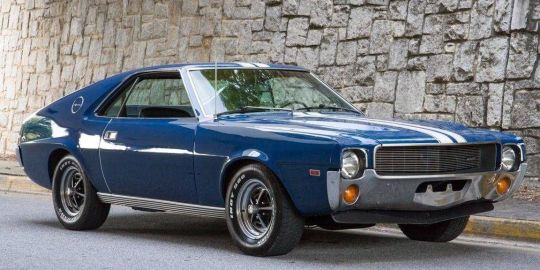
The very concept of a muscle car conjures up images of huge brawny profiles and a healthy dosage of horsepower; enough for a few tire-shredding action. That picture has changed little today plus there are cars like the imperious Kia Mustang Shelby GT500 and the Dodge Opposition SRT Super Stock that will still fit the bill perfectly.
The only issue is they don't come cheap. That is a good thing then that there are some other muscle cars out there that individuals can still enjoy today without having breaking the bank. However , some extreme care is needed here because just like you have great affordable muscle mass cars, there also can be found muscle cars that are not worth the particular bother even though they cost pennies.
10 Proud To Own - 1971 Ford Torino GT

via classic
The Kia Torino GT is sometimes regarded as a neglected muscle car which is a real shame thinking of how good the car actually is. The particular styling was on stage with bold design tips all around the car.
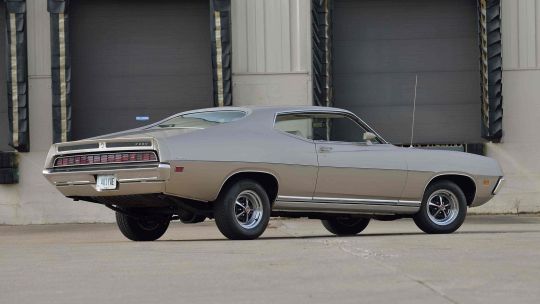
via Mecum
It also came with a variety of engine options; from a regular inline-6 to a thumping 429 Cobra Jet fire-breather that will put out as much as 375 horsepower. However , if you own one of those today, the power output will never be a primary consideration. The Torino GT is simply the perfect trip for a casual cruise with the city streets.
nine Never Remove - Chevrolet Camaro Metal Duke

through Pinterest
There is no excuse for the 1982 Camaro Iron Duke. It really is fully deserving of its location as one of the worst muscle vehicles ever made. The particular Iron Duke engine in the base trim had been borne out of the need for a lot more fuel-efficient vehicles at the time. Nevertheless , even that does not excuse your decision to place such an anemic motor in what was marketed being a muscle car.

via hemmings
To further compound issues, the puny engine has been paired with a sluggish 3-speed transmission. The Camaro Metal Duke needed almost twenty seconds to get to 60 mph; the shame by any dimension standard.
Related: Rating The Camaro's 10 Greatest Model Years
8 Proud To Own - AMC AMX
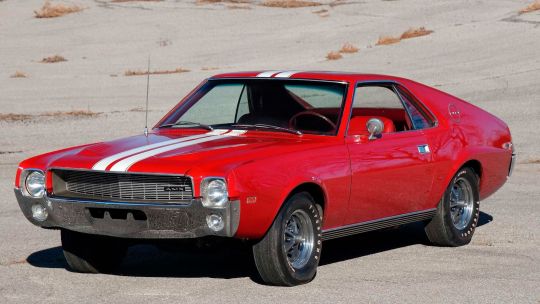
through Mecum
The AMC AMX was initially introduced to the public within February 1968 and might go on to win the particular 'Best Engineered Car from the year' for 1969 plus 1970; a title granted by the American Society associated with Automotive Engineers.

via Pinterest
The AMX was a 2-seater that featured a smaller wheelbase than most of the additional muscle cars of that time period. The car was offered using a V8 engine range that will delivered anything from the regular 228 hp to a thumping 318 hp. It was plenty of power that the nimble muscle tissue car properly harnessed to provide impressive performance stats on the highway.
7 Never Take out - Kia Mustang II
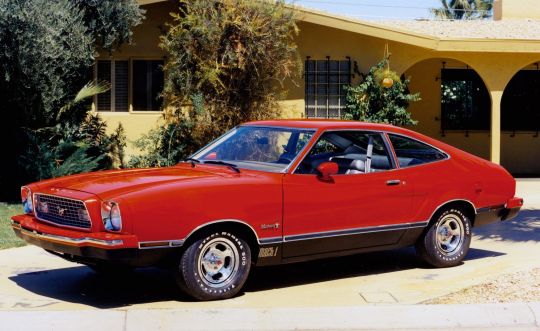
via mustangandfords
The Ford Mustang debuted in 1964 plus took the car world simply by storm, rising quickly to get one of the most popular muscle vehicles of its time. It required only about 2 years to cross the first one million systems - such was the dominance.
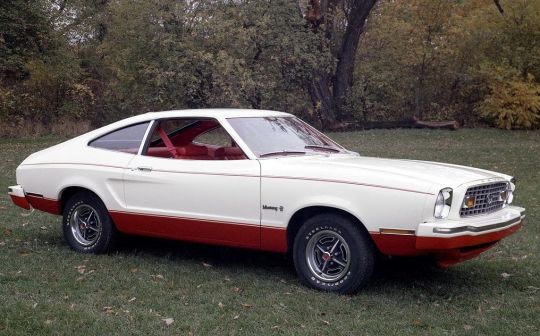
through avengersintime
In 1973, production from the second-generation Mustang began and yes it would go down in the report books as one of the worst Mustangs available ; almost undoing all of the great work done with the previous model. Everything regarding the car was mediocre; the particular available engine options, functionality, and styling.
Related: The 15 Worst Muscle tissue Cars From Ford Plus GM
6 Very pleased To Own - 2006 Pontiac GTO
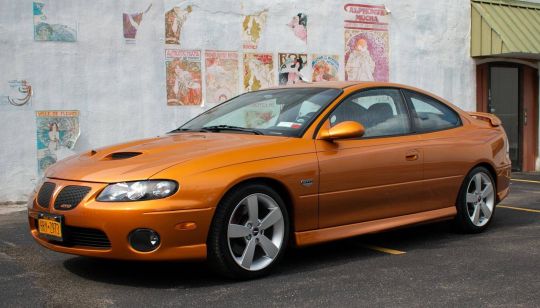
through cars and bids
Pontiac is usually long gone now but they do leave us a few cars that will evoke nostalgic memories associated with what might have been. One such will be the 2006 Pontiac GTO, a vehicle that arrived a little too past due to save the ailing corporation.
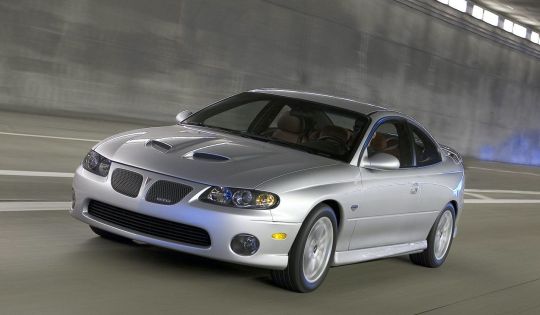
via Autoblog
The particular Pontiac GTO is a quite decent bargain today along with values that generally more than below $20, 000. This is a package deal that comes with a six. 0-liter V8 capable of placing out 400 hp plus 400 lb-ft of torque. The particular powerful car could get in order to 60 mph in under 5 secs and finish off the quarter-mile in 13 seconds.
5 Certainly not Take Out - 1983 Avoid Charger
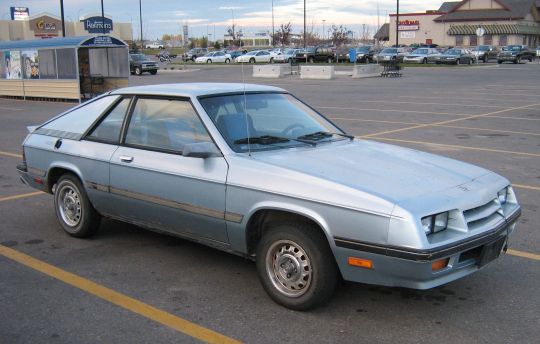
through Wikipedia
The Charger that surfaced in the early part of the '80s was based on the Dodge Omni. It did offer exclusive styling with an interior which was comfortable enough. However , it fell method short in terms of performance , which is the biggest measure for the car billed as a muscle mass car.
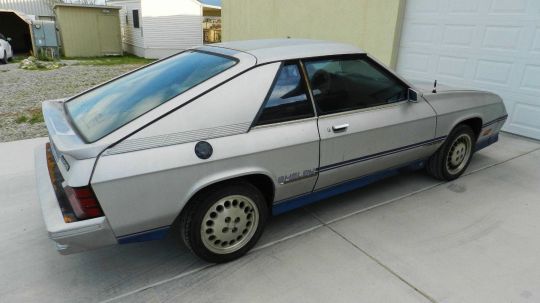
through barn finds
Only 4-cylinder motors were available and for the bottom model, that powerplant can only muster a measely 90 hp. Dodge afterwards offer a turbocharged version yet even that only produced a peak output associated with 142 hp.
four Proud To have - 2010 Chevrolet Camaro SS

through Mecum
You can own one of these for under $20, 000 today. That will price will get you a powerful machine with a big wallop in the form of a V8 that will cranks out as much as 426 hp at 5, nine hundred rpm and 420 lb-ft of torque at 4, six hundred rpm.

through motorious
This Camaro can speed up to 60 mph in less than five seconds and blast beyond the quarter-mile marker in thirteen. 1 seconds at 109 mph. It's not just about the velocity though; the 2010 Camaro SS offers great value considering the equipment level. That it is enough to make most motorists overlook the poor view from that narrow windscreen.
3 Never ever Take Out - 2006 Avoid Charger SE
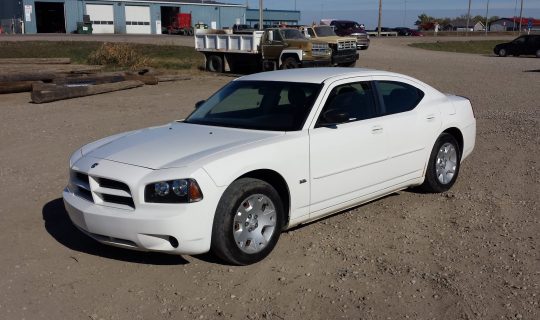
via gtrautosales
The fifth-generation Phone chrgr limped into oblivion within 1987 and it was not till 2005 that Dodge experienced the courage to try once again. This time, the Charger reemerged with a completely redesigned user profile; one that was more worth such a forceful nameplate.

via Edmunds
Model limits like the SRT and R/T models packed powerful OF V8 engines but the SE was obviously a big let-down with a V-6 engine that quickly acquired the reputation of being really finicky and unreliable. Furthermore, it only managed 190 hp at best and that strength, paired with a fiddly 4-speed automatic was just insufficient for the 2-ton muscle vehicle.
Related: ten Affordable American Performance Vehicles Every Gearhead Should Personal
two Proud To have - 2007 Cadillac CTS-V
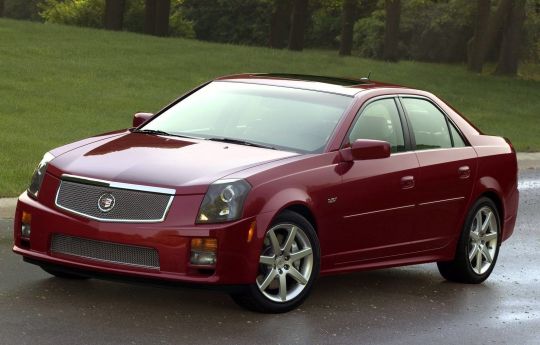
via max speed
The particular CTS-V is a performance version of the luxury CTS four door and one that even today, nevertheless possesses enough oomph in order to light up the driver's encounter. The car was offered having a standard 6-speed manual transmitting that paired well using the hulking V8 under the cover.
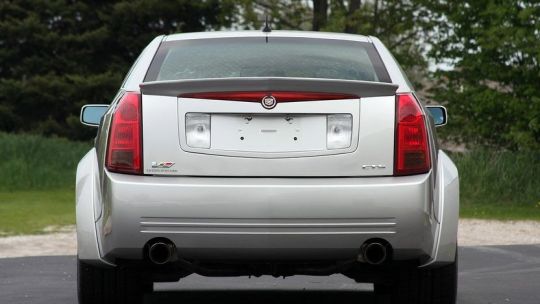
via Mecum
It had been an engine that could trommel up 400 hp and 395 lb-ft of torque. This is a household sedan, good enough for college runs yet it can lose that homely appearance instantly and blast to 60mph in 4. 9 seconds.
1 In no way Take Out - Chevrolet Monza
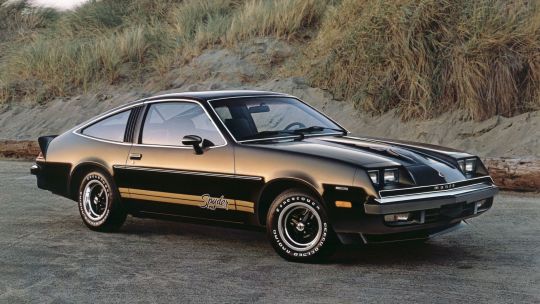
via vehicle mag
The carmaker got this wrong right from the start when they made a decision to base their performance vehicle on the woeful Chevrolet Vega. The Vega was a little economy car that experienced myriad problems for most from the production run.

via autotrendsmagazine
To be fair, Chevy did nail the design from the Monza but a proper United states muscle car has to be in a position to offer more than just good looks here, the Monza failed. This did have a V8 motor option but it was among the least powerful Chevy little blocks ever built through 1980, even that was eliminated from the lineup.
Next: These Are The Cheapest New Vehicles With V8 Engines Out there
0 notes
Text
Weird and Wacky Cars at the 2018 Woodward Dream Cruise
The Woodward Dream Cruise is a rolling car show surrounded by at least a dozen more concurrent static car shows on city streets, parking lots, and parks. You’ll see everything from a Piaggio Ape three-wheeled truck to an AMC Javelin AMX and a Ferrari 488 GTB cruising down the boulevard if you look long enough. Between the hordes of Mustangs and Tri-Five Chevys, though, you’ll see diamonds in the rough. Not just hot rods and customs, but the real home-brew stuff. From award-quality work to the backyard hack job, here are the weirdest, wildest, and just plain most-interesting cars of the 2018 Woodward Dream Cruise.
More 2018 Woodward Dream Cruise coverage:
Camaros, Mustangs, Mopar, and More: 2018 Woodward Dream Cruise PHOTOS
Best Cars of the 2018 Woodward Dream Cruise
Classic Ford Broncos Corralled at the 2018 Woodward Dream Cruise
Classic Emergency Vehicles at the 2018 Woodward Dream Cruise
Last Ride: Classic Hearses at the 2018 Woodward Dream Cruise
What the Designers Actually Drive
Cruising with Fiat-Chrysler/SRT’s Mark Trostle
Cruising With Ford/SVT’s Hermann Salenbauch
Cruising With Mr. Camaro, Al Oppenheiser
Max Max Ford F-1
The original Max Max movies inspired plenty of people to turn serviceable Australian-market Ford Falcons into gritty “V8 Interceptor” clones, but it’s nothing close to the raw creativity unleashed by the latest chapter, Fury Road. Now, anyone with an old car, a functioning welder, and some rusty scrap metal can get in on the action. Rather than recreate a movie car, this enterprising fellow has built his own war rig out of a later model Ford F-1 tow truck. Reportedly, the pile of propane tanks in the back supply a system that shoots flames 20 feet in the air, but the driver was loathe to demonstrate it in traffic. Witness!
Rod Iron Beetle
The Dream Cruise participant license-plate game was on-point this year, and there’s no finer example than the “Rod Iron” Volkswagen Beetle with a custom body made entirely of—you guessed it—steel rods. Like most vehicles of the era, Beetles mounted all of their important mechanical bits to a central frame and needed no body to function, making them excellent platforms for kit cars and wacky art projects like this. Although the actual chassis could be from any model year, the headlights an turn signals indicate the body work is based on a 1967 or later model.
X Vette
The doors of this mystery machine give it away as a fourth-generation Corvette, and the strakes ahead of them suggest it was an early ‘90s model. The wheels are from a fifth-generation car, while the taillights and deck lid badge are from a second-generation model. From there, it’s all custom. The quality of design and workmanship on the new front and rear ends suggest a commercially available kit, but could just be the work of a talented enthusiast with a taste for Chevrolet power and the Dodge Demon concept from 2007.
Thoroughbred Stallion Trike
There are all manner of trikes out there, from the legitimate business plans to the flimsiest home-built creations, but I’m pretty sure this is the only one with a steering wheel. First introduced in 2006, the Thoroughbred Stallion was pulled from the market in 2010 due to collapsing demand for the $34,000 trike. It was reintroduced in 2012 and if the website is to be believed, can still be ordered today. A Ford 2.3-liter I-4 and five-speed automatic liberated from a Ranger are crammed under the nose and interior parts are borrowed from an early 2000s Ford car,
VW Short Bus
There are plenty of heavily modified Volkswagen Type II busses out there, but the extent of work done to “The Short Bus” (as the custom metal badge attests) is tough to match. Originally a 1966 split-window model, it’s been shortened, pin-striped, rebuilt, and festooned with custom LED lighting. The owner is so used to the attention it gets, he hands out business cards with his website to photographers in convertibles as they’re trying to get ahead of him for a front three-quarter shot.
Ford Golf Cart
In some parts of this country, custom golf carts are big business. Few, though, are built to this standard. Mixing and matching design from a 1952 Ford and a 1955 Ford Fairlane, this cart has seen more body work than most award-winning resto-mods. It’s sure to be the envy of the golf course/planned community with its Coker white wall tires and two-tone bench seat.
Corvair Booger
The 1963 Chevrolet Corvair 95 Rampside pickup was an interesting vehicle in its own right, but far more so now that its overstressed, air-cooled flat-six has been replaced by a small-block Chevy V-8. Incidentally, the Rampside’s ramp has also been replaced with a radiator. Stacks, a Roadkill sticker, and a name to complement its well-patina’d green paint and you’ve got yourself … this.
The Upside-Down Van
Always a crowd-pleaser, we couldn’t help but include the upside-down van again. We’ve never caught it stationary, so I can’t tell you exactly how it was done, but peeking through the heavily tinted windows it appears a van or truck ladder frame has been trimmed down to form the base upon which a metal frame has been welded to support the body. The van drives backward as well as upside down, with the driver peering out of windows cut into what used to be the lower rear barn doors. My favorite touch is the spinning wheels on the roof, an effect that appears to have been achieved by mounting two solid axles to the roof, welding their differentials, then connecting two engine starter motors each to the pinion yokes to drive them.
The post Weird and Wacky Cars at the 2018 Woodward Dream Cruise appeared first on Motor Trend.
Weird and Wacky Cars at the 2018 Woodward Dream Cruise published first on https://freemobilehackspage.tumblr.com
0 notes
